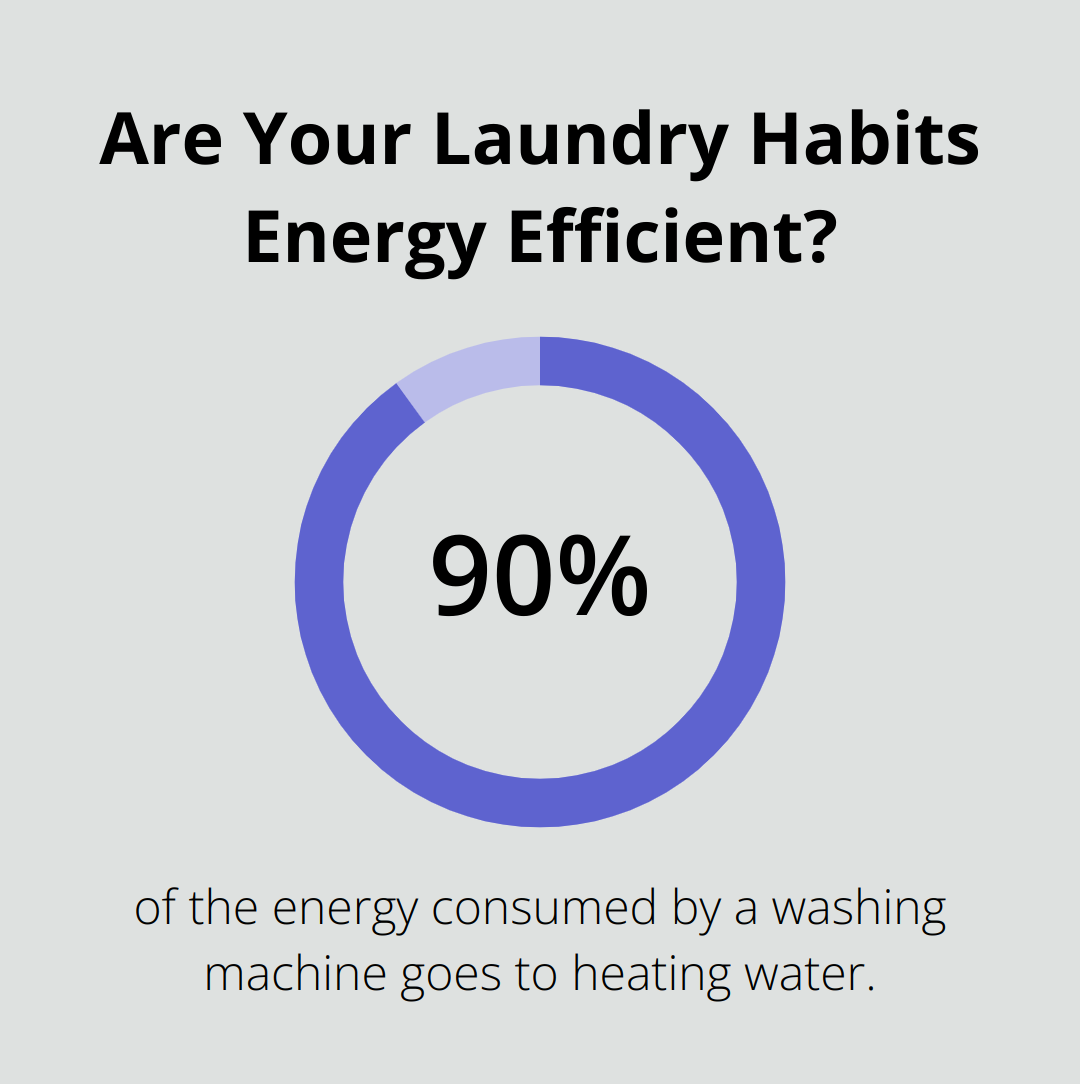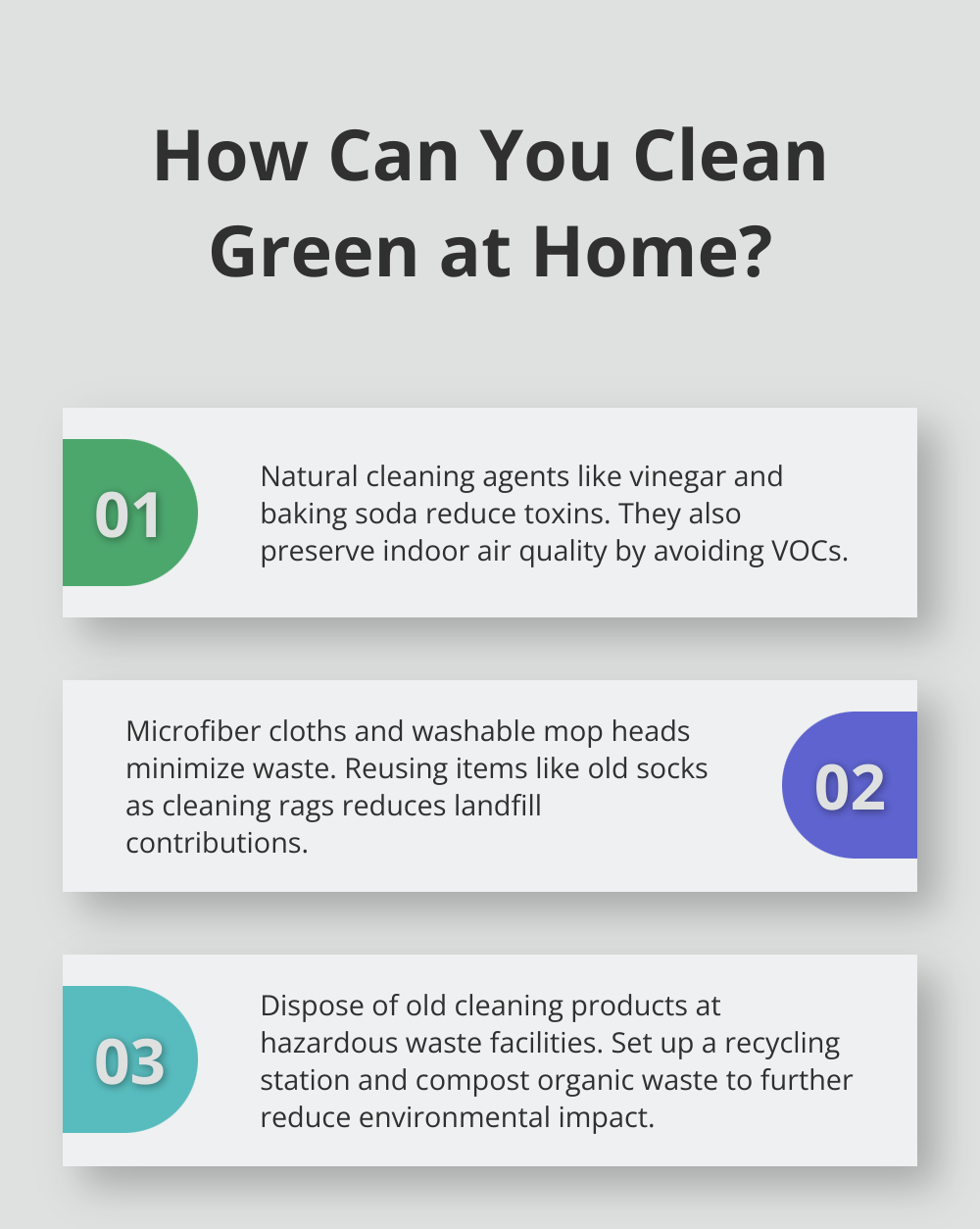Moving can be stressful, but it doesn’t have to be harmful to the environment.
At The A Team Cleaning Services, we understand the importance of making eco-friendly choices, especially during a move.
With some planning and the right techniques, you can reduce your carbon footprint and create a healthier home.
Let’s explore How to Clean Your Home for a Green Move.
How Can You Ensure a Green Move?
Declutter and Donate
Start by assessing each room to identify items you no longer need. Decluttering is essential because it decreases the amount of stuff to pack and transport, leading to fewer trips and less fuel consumption.

Donate usable items to organizations like Goodwill or the Salvation Army rather than sending them to the landfill. These organizations accept a wide range of goods, and donations can help others while also benefiting the environment. Properly recycle electronics, old batteries, and other materials to prevent toxic elements from polluting the environment.
Opt for Sustainable Packing Materials
Avoid traditional packing materials like plastic bubble wrap and instead use eco-friendly options. For instance, recycled packing paper is a great substitute. According to the EPA, recycling one ton of paper can save enough energy to power the average American home for six months and save 7,000 gallons of water.
Repurpose household items such as towels, blankets, and clothing to wrap fragile items. This method cuts down on waste and reduces the need for additional packing supplies. Consider renting reusable moving boxes rather than buying new cardboard boxes. Companies offering these services often provide sturdy, stackable bins that can be used multiple times, further reducing waste.
Plan Your Cleaning Schedule
A structured cleaning plan is crucial for an organized and efficient green move. Tackle the cleaning in stages to ensure you don’t miss any parts of your home. Begin with areas that require the most effort, such as bathrooms and kitchens. Schedule specific days for deep cleaning these spaces using eco-friendly products. Vinegar, baking soda, and essential oils are effective, non-toxic alternatives to chemical cleaners and have been endorsed by organizations like the EPA for green cleaning.
Using microfiber cloths instead of paper towels can save hundreds of sheets of paper, reducing waste significantly. They are durable, reusable, and effective in picking up dust and dirt. Additionally, using cold water for laundry and washing purposes saves energy. EPA statistics show that about 90% of the energy consumed by a washing machine goes to heating water, so opting for cold water can lead to considerable energy and cost savings.
By following these steps, you can prepare your home efficiently and sustainably, paving the way for a green move that benefits both you and the environment.
What Are Effective Green Cleaning Techniques?
To achieve a greener home, embracing eco-friendly cleaning methods is essential. Here’s how you can make your cleaning routine more sustainable.
Use Natural Cleaning Agents
Switching to natural cleaning agents is not just a trend but a necessary transformation. Vinegar, baking soda, and essential oils are powerhouse cleaners that tackle grime without introducing toxins into your home. According to the EPA, using green cleaning products can help to reduce the human health and environmental concerns that come along with cleaning. For example, a simple mixture of vinegar and water can disinfect surfaces effectively.

Specific combinations like baking soda and vinegar are great for scrubbing tough stains, while lemon juice can naturally bleach and deodorize surfaces. Unlike commercial cleaners, these ingredients do not release harmful volatile organic compounds (VOCs) into your indoor air, preserving air quality and reducing health risks.
Opt for Reusable Cleaning Tools
Incorporating reusable cleaning tools into your routine can significantly cut down on waste. Microfiber cloths are incredibly efficient at capturing dust and dirt while being reusable and durable. Choosing washable mop heads and reusable dusters also helps in reducing the quantity of single-use products, making your cleaning routine more sustainable.
Even old items like worn-out socks or T-shirts can be repurposed as cleaning rags, extending their life and minimizing waste. This approach not only saves money but also aligns with green living principles by reducing landfill contributions.
Dispose of Waste Responsibly
Proper disposal of waste, especially hazardous materials, is vital for eco-friendly cleaning. The EPA stresses that old cleaning products should never be poured down the drain or tossed in regular trash as they can pollute water sources and harm wildlife. Instead, look for local hazardous waste disposal programs that ensure these materials are managed safely.
Recycling is another key component. Setting up a home recycling station simplifies sorting and ensures recyclable materials like glass, plastic, and cardboard get properly processed. Moreover, composting organic waste from your kitchen and garden can reduce landfill dependency and create nutrient-rich soil for your plants.
By adopting these green cleaning techniques, you’re taking actionable steps towards a more sustainable home environment and contributing positively to the planet.
How to Maintain Sustainability During Your Move
Manage Energy and Water Usage
Energy and water consumption can skyrocket during a move due to increased cleaning, packing, and transport activities. To minimize your environmental impact, make a point of using energy-efficient practices. Start by switching to LED bulbs, which use at least 75% less energy compared to incandescent lighting and last up to 25 times longer. Additionally, relying on energy-efficient appliances, as recommended by the U.S. Department of Energy, can significantly reduce electricity use during packing and cleaning tasks.

When it comes to cleaning, opt for cold water whenever possible. The EPA notes that 90% of the energy used in washing machines heats the water, so using cold water not only protects the environment but also saves on utility bills. Efficiently using water during cleaning tasks prevents wastage; for instance, turning off the tap while scrubbing can conserve gallons of water.
Choose Sustainable Furniture and Appliances
Moving is an excellent opportunity to rethink your furniture and appliance choices. Consider investing in sustainable furniture made from recycled materials or certified by environmental standards. Brands like True Homes offer new, environmentally friendly options that align with green living. Selecting appliances with high energy efficiency ratings can also make a considerable difference; Energy Star-certified appliances, for instance, can save about $450 on their energy bills each year and still enjoy the quality and performance they expect.
Additionally, if you’re discarding old furniture or appliances, try to sell or donate them rather than sending them to a landfill. Platforms like Goodwill and the Salvation Army accept a variety of items, ensuring that your unwanted goods have a second life and reducing waste.
When it comes to cleaning, swap out traditional sponges and dish brushes for compostable options. Materials like bamboo for dish brushes and other eco-friendly alternatives make a notable difference.
Minimize Carbon Footprint During Transportation
Transportation is one of the largest contributors to carbon emissions during a move. Reducing the number of trips by decluttering effectively not only makes your move more manageable but also cuts down on fuel consumption. Opt for fuel-efficient vehicles or even consider renting a single large truck instead of making multiple trips with a smaller vehicle.
Another practical strategy is to choose moving companies that emphasize eco-friendly practices. Some companies utilize biodiesel or offer carbon offset programs, ensuring that your move has a smaller environmental footprint.
For local moves, encourage carpooling among movers to further cut down on vehicle use. If moving long distances, plan the route to minimize travel time and fuel consumption. Every small step taken towards reducing the number of trips and maximizing efficiency contributes to a greener move.
By incorporating energy and water-saving measures, selecting eco-friendly furniture and appliances, and minimizing your transportation footprint, you can ensure that your move is both sustainable and efficient.
Conclusion
By following these green moving steps, you not only contribute to a healthier environment but also create a more pleasant and organized home. Decluttering reduces the amount of stuff you need to move, making the process more efficient. Opting for sustainable packing materials and setting up an efficient cleaning schedule with eco-friendly products reduces waste and conserves resources.

The benefits of a green move are substantial. You reduce your carbon footprint, create a healthier living space, and often save money on energy and cleaning supplies. Utilizing natural cleaning agents prevents exposure to harmful chemicals, while reusable tools and responsible disposal practices minimize environmental impact.
For maintaining an eco-friendly home post-move, continue using energy-efficient appliances, natural cleaning products, and reusable tools. Incorporate regular maintenance like clearing out air ducts and using microfiber cloths to ensure your home remains sustainable.
We at The A Team Cleaning Services are dedicated to providing top-notch, eco-friendly cleaning solutions. If you need professional help, explore our services for a spotless and fresh-smelling home without lifting a finger. Our commitment to quality and customer satisfaction ensures a pristine living environment for you and your family.
